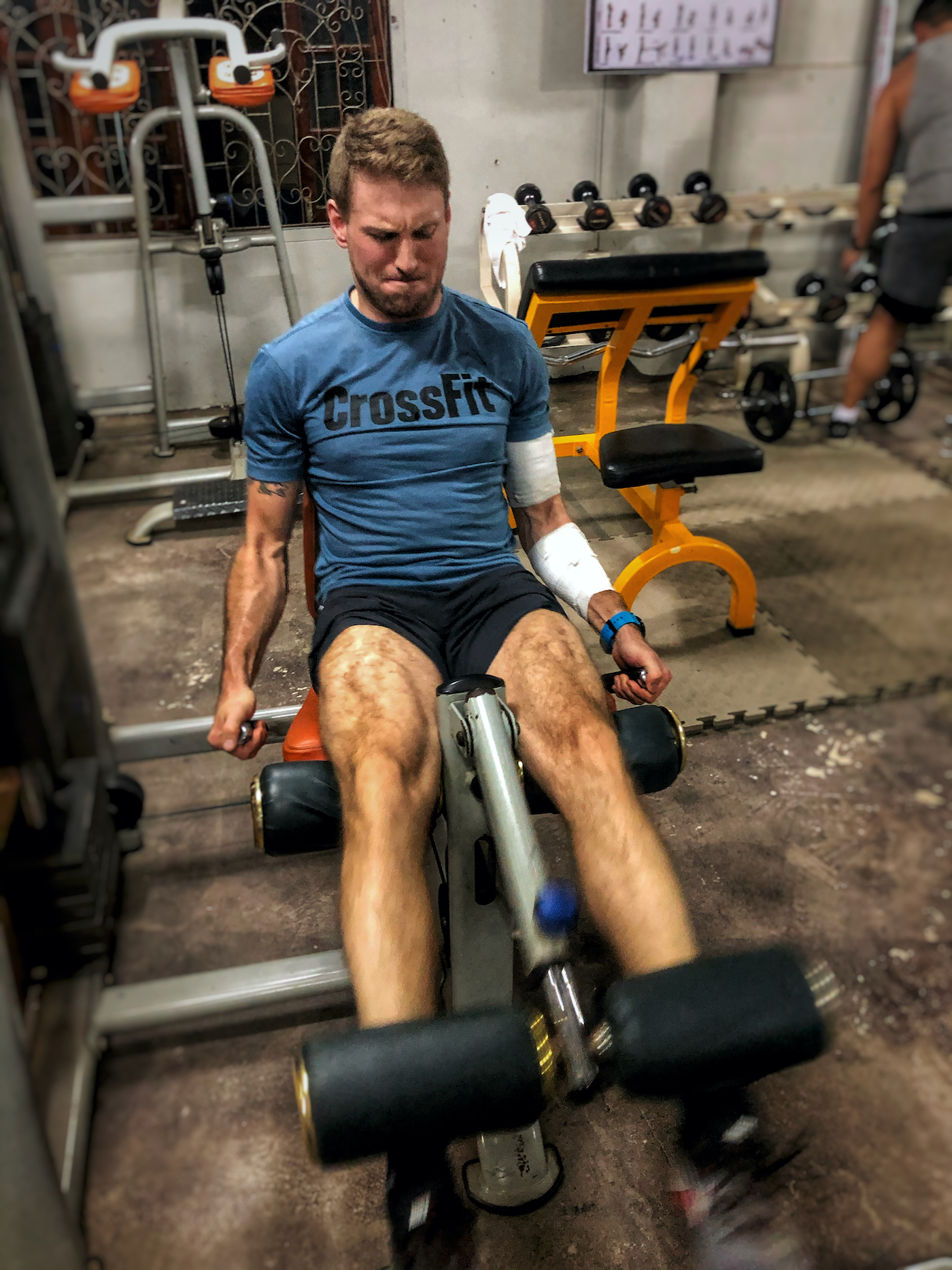Breakthrough to a Stronger You: The Ultimate Functional Strength Training Program
Table of Contents
Functional Strength Training: A Path to a Stronger You
If you’re looking to improve your overall fitness and achieve a stronger, healthier body, functional strength training is an excellent path to consider. This type of training focuses on movements that mimic everyday activities, helping you build strength and stability that you can apply to your daily life. By understanding the fundamentals of functional strength training and its benefits, you can embark on a journey towards a stronger you.
Understanding Functional Strength Training
Functional strength training is a form of exercise that emphasizes movements that are practical and applicable to real-life situations. Unlike traditional strength training that often isolates specific muscle groups, functional strength training focuses on engaging multiple muscle groups simultaneously. This approach improves coordination, balance, and overall body strength.
In functional strength training, exercises are designed to simulate movements you perform in your daily life, such as lifting groceries, picking up objects from the ground, or pushing a heavy door. By training your body to handle these functional movements, you can enhance your ability to perform daily tasks more efficiently and with reduced risk of injury.
Benefits of Functional Strength Training
Functional strength training offers a wide range of benefits that go beyond simply building muscle. Here are some key advantages of incorporating functional strength training into your fitness routine:
- Improved functional fitness: Functional strength training enhances your ability to perform everyday activities with ease and efficiency. Whether it’s carrying heavy bags, climbing stairs, or playing sports, functional strength training helps you build the necessary strength and endurance.
- Enhanced stability and balance: By engaging multiple muscle groups simultaneously, functional strength training improves your overall stability and balance. This is especially beneficial for older adults, as it can reduce the risk of falls and injuries.
- Increased calorie burn: Functional strength training is a highly effective way to burn calories. Since it engages multiple muscles, it can result in a higher calorie expenditure compared to traditional strength training exercises that isolate individual muscle groups.
- Injury prevention: Functional strength training helps improve muscle imbalances and strengthens the stabilizer muscles, reducing the risk of injuries. By training your body to move in a controlled and coordinated manner, you can minimize the strain on joints and reduce the likelihood of accidents.
- Versatility and adaptability: Functional strength training can be tailored to suit individuals of all fitness levels and ages. Exercises can be modified to accommodate different abilities and goals, making it accessible to a wide range of individuals.
Understanding the benefits of functional strength training is the first step towards building a stronger, healthier body. In the next sections, we will delve into the process of creating the ultimate functional strength training program, key exercises to incorporate, and tips for success along your fitness journey. For more information on specific exercises and workouts, check out our articles on functional strength training exercises and functional strength training workouts.
Building the Ultimate Functional Strength Training Program
To embark on your journey towards a stronger and healthier you, it’s important to build a well-rounded functional strength training program. This program will help you improve your overall strength, stability, and mobility, enabling you to perform everyday activities with ease and confidence. Let’s explore the key steps in creating your ultimate functional strength training program.
Setting Goals and Assessing Your Fitness Level
Before diving into any workout routine, it’s essential to set clear goals and assess your current fitness level. Define what you want to achieve through your functional strength training program. Whether your goal is to lose weight, increase muscle mass, or enhance your athletic performance, having a specific target will help you stay focused and motivated.
Once you’ve established your goals, assess your fitness level to determine your starting point. This assessment will help you identify any muscle imbalances, weaknesses, or limitations that need to be addressed. It can be as simple as performing bodyweight exercises, testing your flexibility, or seeking professional guidance. Understanding your current abilities will allow you to tailor your functional strength training program to suit your individual needs.
Designing Your Workout Routine
Designing an effective workout routine is the next step in building your functional strength training program. Consider the following factors when creating your routine:
- Exercise Selection: Choose exercises that target multiple muscle groups and mimic movements you perform in daily life. Include a mix of compound exercises such as squats, deadlifts, push-ups, pull-ups, lunges, and planks. These exercises engage multiple joints and muscle groups, enhancing your overall functional strength.
- Repetition Range: Determine the number of repetitions and sets that align with your goals. Aim for a moderate repetition range of 8 to 12 reps per set to improve both strength and endurance. Adjust the weight or resistance to challenge yourself without sacrificing proper form.
- Rest Periods: Allow adequate rest periods between sets to ensure proper recovery and optimize performance. Generally, rest for 1 to 2 minutes between sets of strength exercises. For endurance-focused exercises, shorter rest periods of 30 to 60 seconds can be implemented.
- Progression: Gradually increase the intensity of your workouts as you get stronger and more comfortable with the exercises. This can be achieved by adding resistance, increasing weights, or challenging yourself with more advanced variations of the exercises.
Remember to incorporate a mix of cardiovascular exercises into your routine to complement your functional strength training. This can include activities such as brisk walking, cycling, or swimming, which improve cardiovascular fitness and support overall health.
For further guidance on specific exercises and workouts, check out our articles on functional strength training exercises and functional strength training workouts. Additionally, if you’re interested in equipment options to enhance your functional strength training, take a look at our article on functional strength training equipment.
By setting clear goals, assessing your fitness level, and designing a well-structured workout routine, you can create the ultimate functional strength training program tailored to your individual needs. Remember to focus on proper form, gradually increase intensity, and find the right balance between strength and cardiovascular training. Stay committed, be consistent, and enjoy the journey towards a stronger and healthier you!
Key Exercises for Functional Strength
To develop functional strength and improve your overall fitness, incorporating key exercises into your workout routine is essential. These exercises target multiple muscle groups, improve coordination, and enhance your ability to perform everyday activities with ease. Here are six key exercises that will help you build functional strength:
Squats
Squats are a fundamental exercise for building lower body strength and stability. They primarily target the muscles of your thighs, hips, and glutes. To perform a squat, stand with your feet shoulder-width apart, then lower your body by bending your knees and pushing your hips back. Keep your chest lifted and your weight in your heels. Squats can be modified to suit different fitness levels and can be performed with or without weights.
Deadlifts
Deadlifts are a compound exercise that engages multiple muscle groups, including the muscles of your back, glutes, and hamstrings. They help improve your posture, strengthen your core, and enhance your ability to lift heavy objects safely. To perform a deadlift, start with your feet hip-width apart, bend your knees, and grip a barbell with an overhand grip. Keep your back straight as you lift the barbell by extending your hips and knees. If you’re new to deadlifts, it’s important to start with lighter weights and focus on proper form to avoid injury.
Push-ups
Push-ups are a classic exercise that targets your chest, shoulders, triceps, and core muscles. They help build upper body strength and stability. To perform a push-up, start in a high plank position with your hands slightly wider than shoulder-width apart. Lower your body by bending your elbows until your chest nearly touches the ground, then push back up to the starting position. If traditional push-ups are challenging, you can modify them by performing them on your knees or against a wall.
Pull-ups
Pull-ups are an excellent exercise for building upper body strength, particularly in your back, shoulders, and arms. They also engage your core muscles. To perform a pull-up, start by gripping an overhead bar with your palms facing away from you. Hang with your arms fully extended, then pull your body up by bending your elbows and bringing your chin above the bar. Lower yourself back down with control. If you’re unable to perform a full pull-up, you can use an assisted pull-up machine or resistance bands for support.
Lunges
Lunges are a unilateral exercise that targets your quadriceps, hamstrings, glutes, and core muscles. They help improve balance and coordination. To perform a lunge, start by standing with your feet hip-width apart. Take a step forward with one foot, then lower your body by bending both knees until your back knee is just above the ground. Keep your front knee aligned with your ankle and your torso upright. Push off your front foot to return to the starting position, then repeat on the other side.
Planks
Planks are a core-strengthening exercise that also engage your shoulders, back, and glutes. They help improve stability and posture. To perform a plank, start in a push-up position, then lower your forearms to the ground. Position your elbows directly beneath your shoulders and engage your core muscles. Your body should form a straight line from your head to your heels. Hold this position for as long as you can while maintaining proper form.
Incorporating these key exercises into your functional strength training program will help you build a solid foundation of strength, stability, and mobility. Remember to consult with a fitness professional or personal trainer to ensure proper form and technique. Additionally, you can vary the intensity, repetitions, and sets of these exercises to suit your fitness level and goals.
Incorporating Functional Training Tools
To enhance your functional strength training routine, incorporating various training tools can add versatility and challenge to your workouts. Here are three common tools that can take your functional training to the next level: resistance bands, kettlebells, and medicine balls.
Resistance Bands
Resistance bands are versatile and portable tools that can be used to target multiple muscle groups. These elastic bands provide resistance throughout the entire range of motion, helping to strengthen and stabilize the muscles involved in functional movements.
One of the benefits of resistance bands is their ability to provide variable resistance, meaning the resistance increases as the band is stretched. This helps to better simulate real-life movements where the resistance is not constant. Resistance bands also allow for a wide range of exercises, from upper body pulls and pushes to lower body squats and lunges.
| Exercise | Targeted Muscles |
|---|---|
| Standing Row | Back, Biceps |
| Chest Press | Chest, Triceps |
| Glute Bridge | Glutes, Hamstrings |
To learn more about resistance band exercises, check out our article on functional strength training exercises.
Kettlebells
Kettlebells are weighted spheres with a handle attached, making them ideal for dynamic and functional exercises. The unique design of kettlebells allows for a variety of movements that engage multiple muscle groups simultaneously, improving coordination and overall strength.
Kettlebell exercises often involve swinging, lifting, and rotating movements, which mimic real-life activities. These exercises can help develop core stability, balance, and explosive power. From kettlebell swings to Turkish get-ups, incorporating kettlebell exercises into your functional training routine can provide a challenging and effective workout.
| Exercise | Targeted Muscles |
|---|---|
| Kettlebell Swing | Glutes, Hamstrings, Core |
| Goblet Squat | Quads, Glutes |
| One-Arm Kettlebell Press | Shoulders, Triceps |
For more kettlebell exercise ideas and workouts, take a look at our article on functional strength training workouts.
Medicine Balls
Medicine balls are weighted balls that come in various sizes and weights. They are a versatile tool for improving strength, power, and coordination. Medicine ball exercises typically involve explosive movements, throwing, and catching, which engage multiple muscle groups and challenge your stability.
Using a medicine ball can help improve functional movements such as throwing, twisting, and lifting. It can also enhance your core strength and improve muscular endurance. Whether you’re performing medicine ball slams, rotational throws, or Russian twists, incorporating medicine balls into your workouts can provide a dynamic and effective training experience.
| Exercise | Targeted Muscles |
|---|---|
| Medicine Ball Slam | Core, Shoulders |
| Wall Ball Squat | Quads, Glutes |
| Russian Twist | Obliques, Abdominals |
To explore more exercises and techniques using medicine balls, check out our article on functional strength training equipment.
By incorporating these functional training tools, you can add variety and challenge to your workouts, targeting different muscle groups and working on specific functional movements. Remember to choose the appropriate weight and progress gradually to avoid injury. Experiment with different exercises and techniques to keep your workouts engaging and effective.
Tips for Success in Your Functional Strength Training Journey
To make the most of your functional strength training program, it’s essential to keep a few key tips in mind. These tips will help you achieve optimal results, prevent injury, and maintain motivation throughout your fitness journey.
Proper Form and Technique
One of the most important aspects of functional strength training is proper form and technique. Performing exercises with correct form ensures that you are targeting the intended muscles effectively and reduces the risk of injury. Incorrect form not only hinders progress but can also lead to muscle imbalances and strain.
Take the time to learn the correct form for each exercise in your program. Start with lighter weights or resistance and focus on mastering the movement before progressing to heavier loads. If you’re unsure about proper form, consider working with a certified personal trainer or watching instructional videos from reputable sources. You can also check out our article on functional strength training exercises for more guidance.
Gradually Increasing Intensity
As you become more comfortable with your functional strength training routine, it’s important to gradually increase the intensity of your workouts. This progressive overload is essential for continued strength gains and improvements in performance. However, it’s crucial to strike a balance between pushing yourself and avoiding overtraining or injury.
Increase the intensity of your workouts by gradually adding more resistance, increasing the number of repetitions, or reducing rest intervals. However, avoid making drastic changes too quickly. Gradual progression allows your body time to adapt and minimizes the risk of overexertion. Keep track of your progress using a workout log or app, so you can monitor your improvements over time.
Balancing Strength and Cardiovascular Training
Incorporating both strength and cardiovascular training into your functional strength training program is key to achieving a well-rounded fitness level. Balancing strength and cardiovascular training helps improve overall endurance, cardiovascular health, and body composition.
Include cardiovascular exercises such as running, cycling, or swimming in your routine to elevate your heart rate and improve your cardiovascular fitness. Aim for at least 150 minutes of moderate-intensity aerobic activity or 75 minutes of vigorous-intensity aerobic activity each week, in addition to your strength training sessions. For individuals looking to incorporate functional strength training specifically for running, check out our article on functional strength training for runners.
Remember that everyone’s fitness journey is unique, and it’s important to listen to your body. If you have any underlying health conditions or concerns, consult with a healthcare professional before starting a new exercise program. By focusing on proper form, gradually increasing intensity, and balancing strength and cardiovascular training, you’ll be well on your way to achieving your fitness goals with functional strength training.








